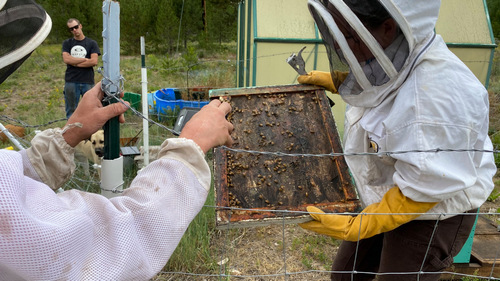In December the NHS announced it would be launching eight “surge” hubs dubbed “mini Nightingales” to help hospitals manage increased admissions amid the Omicron wave.
NHS leaders have raised concerns over the “new mini Nightingales” as hospitals draw up plans for use with “minimal” nursing levels, The Independent has learned.
These facilities would be able to admit about 100 patients and have been set up as temporary sites across eight NHS hospitals.
Details around the safety requirements and required staffing levels have yet to be published, however several NHS sources have said some hubs are planning to use a “low” ratio of 1:15 nurses to patients within the units.
One trust chief has called the staffing models a “disgrace” and says the hospitals should never be used.
Senior sources have questioned the safety of using a 1:15 ratio, although they said the risk would depend on how ill the patients being sent to the units are and whether there would be sufficient health care assistant support. However, sources have said the staffing models have yet to be finalised and so could change.
The eight mini Nightingale hospitals have been set up, in Leeds, Birmingham, Ashford, north Bristol, Leicester, Preston, Stevenage, and south London.

A senior NHS source in the northeast told The Independent that the Leeds nightingale hospital could be in use from next week, however the trust said it doesn’t have any imminent plans to use it.
NHS leaders in Leicester have suggested the nightingale in their region is unlikely to be needed as Covid admissions to hospital begin to slow, while a source in Birmingham said they were working hard to ensure the nightingale is never used.
One hospital chief said: “I think it’s an absolute disgrace, I hope we never use it because I don’t know what your exit strategy is for it. The staffing model is minimal nursing with healthcare assistants and volunteers.”
“There is a staffing model, there aren’t any staff but there is a staffing model.”
Another senior NHS source said NHS England has asked for Nightingale plans based on an “in extremis” situation.
They added: “We would be looking at any staffing option if the system is overwhelmed to such a degree. However, in this current planned scenario then more thought is required. These patients in the Nightingales remain complex with dependency needs which is more nurse intensive and not less – in a very unusual and not ideal physical environment.
They said the lower ratio plans: “plays to a position of not understanding the patient group or nursing expertise. This may have serious care implication and seems to be a question of – can we, rather than should we.”
NHS England declined to comment and pointed towards its press release which said it hopes “we never to have to use these new hubs.”
At the time of the original announcement on the hospitals in December, nursing and doctor unions called for clarity from the government over how the units would be staffed by the already stretched NHS workforce.
Although Covid-19 admissions appear to be decreasing nationally, hospitals across the country have reported concerns over the numbers of patients who are well enough to leave hospital but require care packages in the community so cannot.
According to NHS England figures for 9 January, there were more than 12,000 patients in hospitals across England waiting to be discharged who could not be.
As part of plans to help hospitals discharge more patients NHS England set out guidelines for the NHS to send patients to hotels and use “virtual wards” meaning they would be looked after at home.
Speaking about the use of “care hotels”, one hospital director said: “We are using a care hotel – we are at the end of internal possibilities. We shouldn’t need to do this. But have no choice.”
Their words come as pressures in the care home sector are leading to increased difficulties for hospitals in discharging patients, as both staff shortages and Covid outbreaks have forced providers to close to new admissions.



